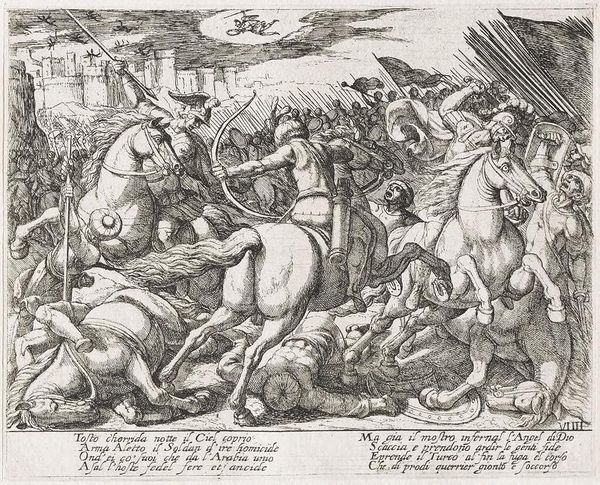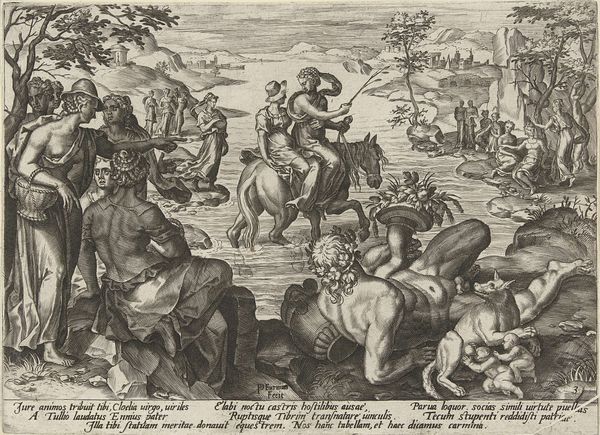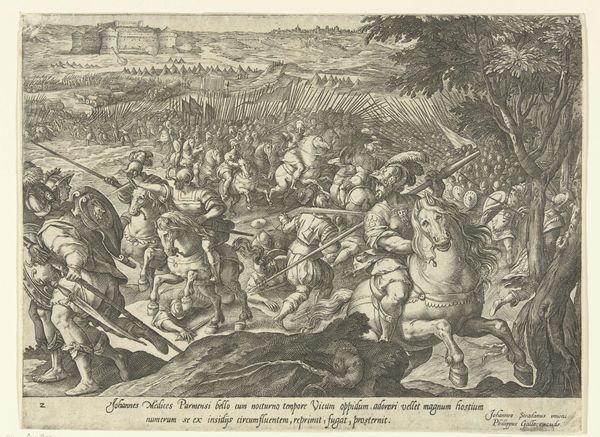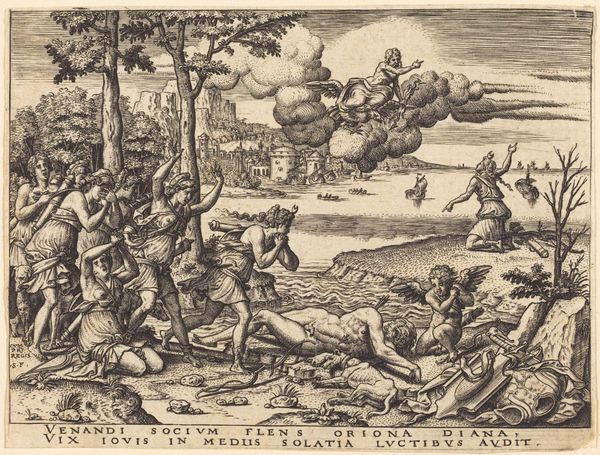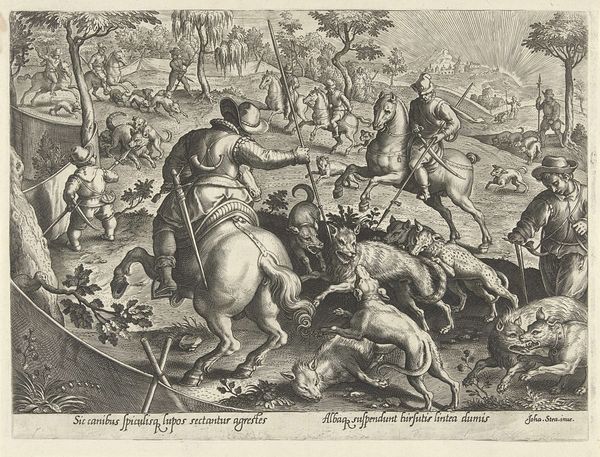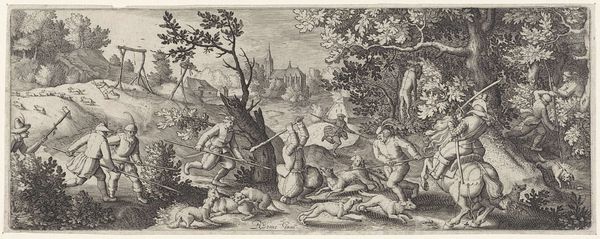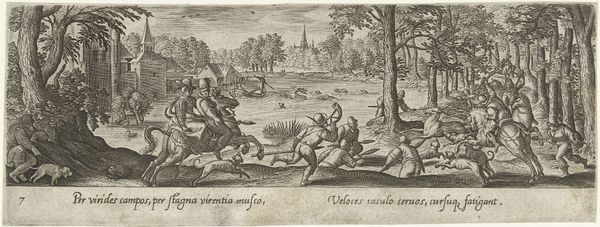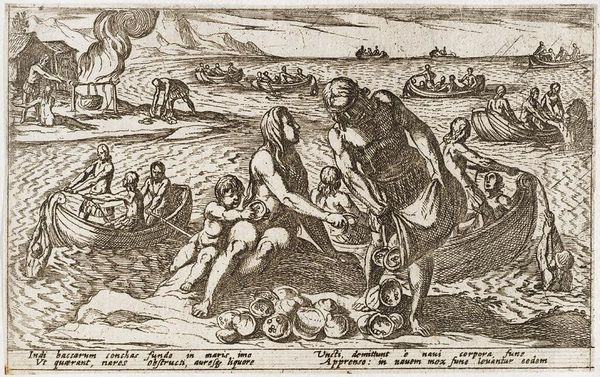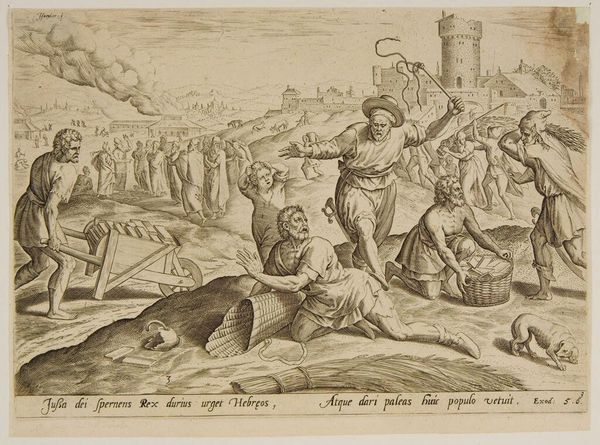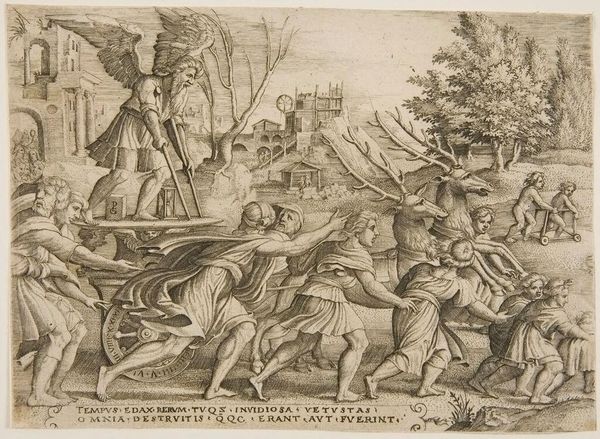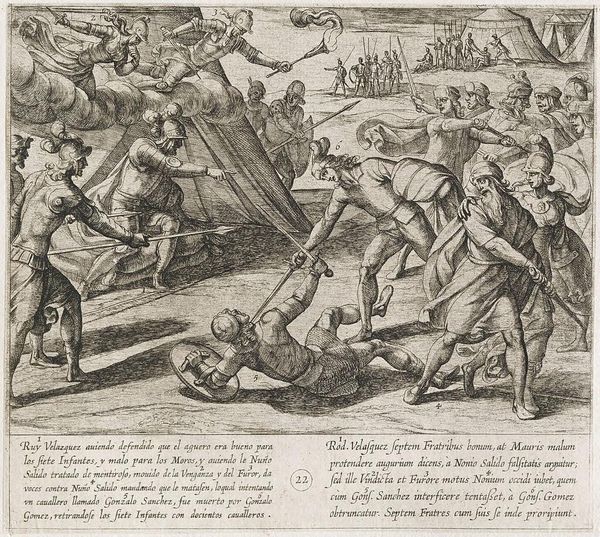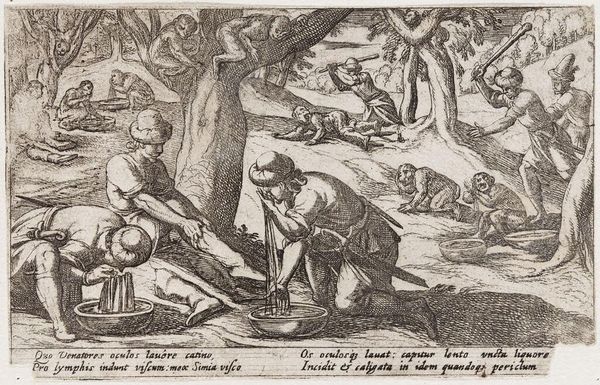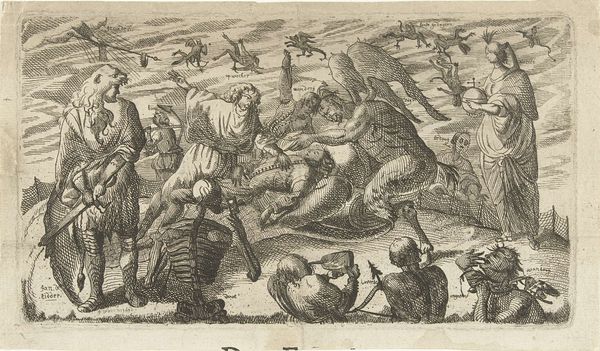
print, engraving
#
narrative-art
#
baroque
# print
#
pen sketch
#
landscape
#
figuration
#
genre-painting
#
engraving
Dimensions: height 81 mm, width 215 mm
Copyright: Rijks Museum: Open Domain
Editor: So this is "Wolvenjacht," a print by Philips Galle, created sometime between 1582 and 1633. It looks pretty action-packed! There's so much detail packed into such a small space; how do you even begin to interpret something like this? What strikes you about it? Curator: Immediately, it’s the spatial arrangement that captivates. Notice how the landscape isn’t just a backdrop; it's meticulously structured. The artist uses receding planes to create depth. Look at how Galle employs diagonal lines and varied textures to define form and guide the viewer's eye from left to right, through each episode of the hunt. What does this arrangement suggest to you? Editor: It's like a visual story unfolding. The diagonal does give it a sense of dynamism. So you're saying it's less about what it literally depicts and more about *how* it's depicted? Curator: Precisely. The subject, while relevant, becomes secondary to the formal concerns. Consider the balance, or lack thereof, and the way the figures and animals interact within that structured space. Note also the integration of text as image: How does the textual band work within the visual field? Editor: Now that I think about it, that text anchors it visually... almost as a base to the whole image, giving some stability to all of the action on top. That interplay of the textual and visual is really clever. It's about design, I see what you mean! Thanks for walking me through this. Curator: My pleasure. It's about seeing beyond the surface narrative and appreciating the underlying structure. Examining these deliberate arrangements allows us to deeply appreciate Galle's artistry.
Comments
No comments
Be the first to comment and join the conversation on the ultimate creative platform.
